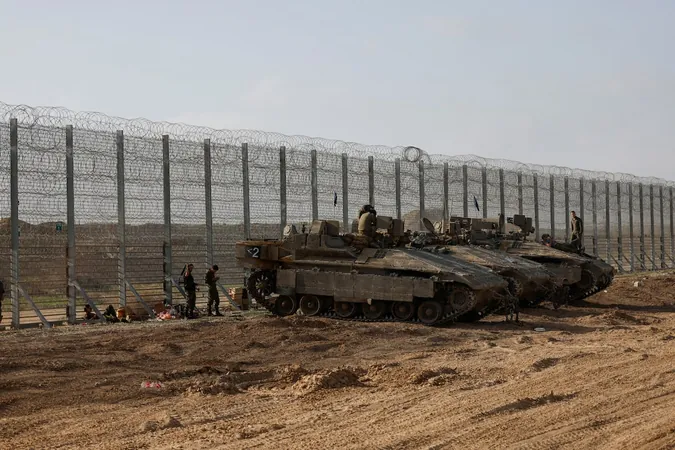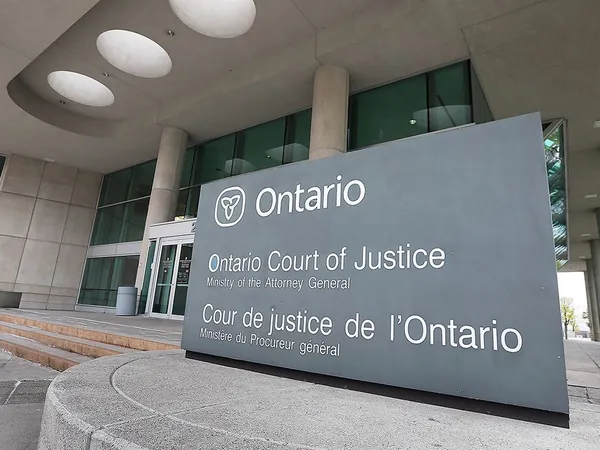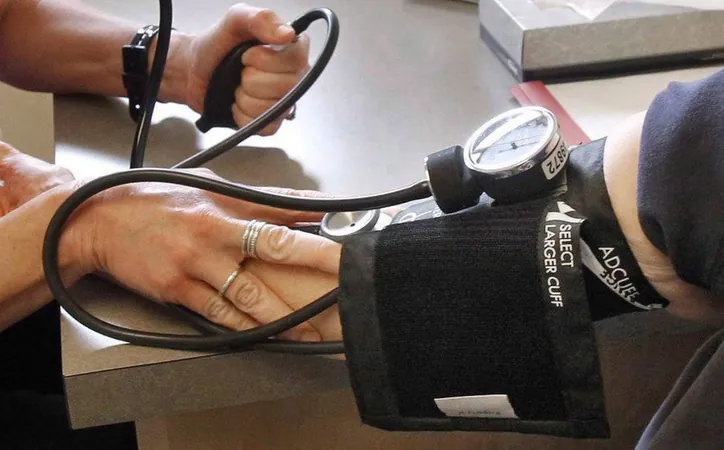
Haunting Testimonies from Israeli Soldiers Reveal Grim Reality of Gaza's 'Kill Zone'
2025-04-07
Author: Charlotte
Introduction
In a staggering report released by the Israeli rights group Breaking the Silence, testimonies from Israeli soldiers depict the extensive destruction of farmland and residential districts in Gaza, carried out as part of an effort to establish a so-called 'kill zone' along the enclave's borders. This initiative has come into sharper focus following the notorious October 7, 2023, Hamas-led attack, which left Israel reeling with a staggering death toll of 1,200 individuals and the abduction of 251 hostages—an event that marked one of the darkest chapters in Israel's security history.
Operation Overview
According to soldiers who participated in the clearance operation, the buffer zone surrounding Gaza has been significantly widened, reaching between 800 to 1,500 meters into the enclave, with some reports suggesting further expansions beyond that. This drastic measure is justified by Israeli authorities as crucial for national security, aimed at preventing future assaults from militant groups.
Soldiers' Testimonies
The soldiers' accounts are harrowing. A captain from the Armored Corps articulately described the landscape as a “kill zone,” stating, “We have a commanding view of it, and they do too.” Testimonies indicate that during the early stages of this operation, approximately 3,500 structures—including homes, farms, and industrial sites—were demolished using bulldozers, heavy machinery, and extensive explosive devices. Alarmingly, nearly 35% of Gaza’s agriculture, which is predominantly situated near its edges, has been obliterated, as reported by the rights group Gisha.
Destruction and Impact
One soldier's description likened the area to post-apocalyptic scenes, saying, “What I saw there… was beyond what I can justify as needed.” This sentiment resonates deeply as the initial bombardments left vast swathes of Gaza in tatters. Soldiers reported seeing the destruction of vital agricultural resources, including olive groves and fields of vegetables, alongside factories that housed significant operations, such as a Coca-Cola plant and a pharmaceutical company.
Casualty Figures
The ramifications of the Israeli military's operations have been catastrophic, with Palestinian health officials reporting over 50,000 deaths, a figure that includes both civilians and armed combatants. Conversely, the Israeli military claims to have targeted around 20,000 fighters, illustrating a stark divergence in perspectives on the conflict's toll.
Displacement of Residents
The lives of the residents of Gaza have been irrevocably changed, with hundreds of thousands forced into makeshift shelters or bomb-damaged buildings. The report indicates that many structures were demolished on the premise that they were linked to Hamas combatants, while countless others were destroyed without any such justification.
Rules of Engagement
Moreover, rules of engagement in this 'kill zone' appear to lack adequate oversight. Soldiers described the environment as loosely governed, where company commanders wielded significant power over critical decisions, often with little accountability. “Most of the time, the people who breach the perimeter are adult men. Children or women didn’t enter this area,” one soldier noted, highlighting the dire circumstances faced by those caught within the conflict's vicious cycle.
Conclusion
As the situation unravels, the international community watches with bated breath, grappling with the complexities of warfare, human rights, and the urgent need for a peaceful resolution. As more eyewitness accounts surface, the stark realities of life in Gaza continues to incite outrage and calls for accountability, leaving many to ponder the true cost of this prolonged conflict.









 Brasil (PT)
Brasil (PT)
 Canada (EN)
Canada (EN)
 Chile (ES)
Chile (ES)
 Česko (CS)
Česko (CS)
 대한민국 (KO)
대한민국 (KO)
 España (ES)
España (ES)
 France (FR)
France (FR)
 Hong Kong (EN)
Hong Kong (EN)
 Italia (IT)
Italia (IT)
 日本 (JA)
日本 (JA)
 Magyarország (HU)
Magyarország (HU)
 Norge (NO)
Norge (NO)
 Polska (PL)
Polska (PL)
 Schweiz (DE)
Schweiz (DE)
 Singapore (EN)
Singapore (EN)
 Sverige (SV)
Sverige (SV)
 Suomi (FI)
Suomi (FI)
 Türkiye (TR)
Türkiye (TR)
 الإمارات العربية المتحدة (AR)
الإمارات العربية المتحدة (AR)